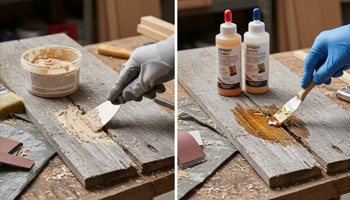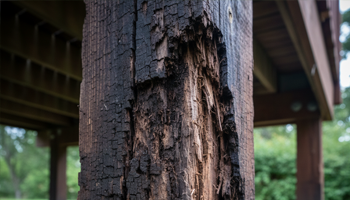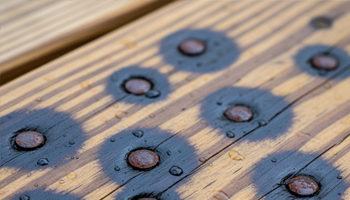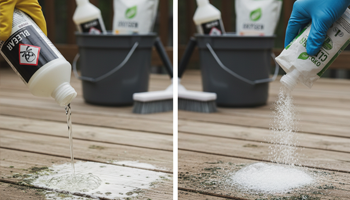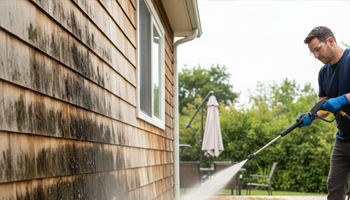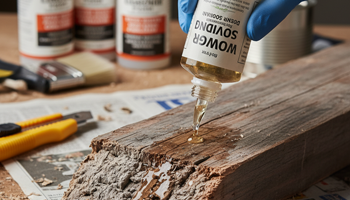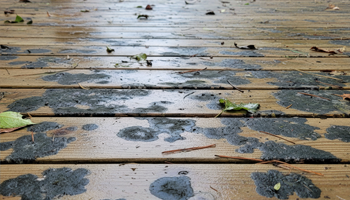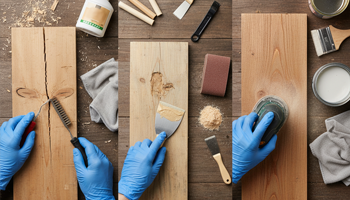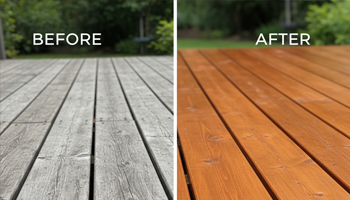Material Longevity in Coastal Urban Architecture
Coastal construction confronts accelerated deterioration from salt spray, humidity cycles, and UV exposure that compounds conventional weathering mechanisms. Material selection in these environments transcends aesthetic preferences or initial cost considerations—it determines whether buildings remain structurally sound and economically viable over multi-decade holding periods. The financial implications of premature material failure extend beyond replacement costs to encompass operational disruptions, tenant displacement, and asset devaluation that destabilize investment returns.
Long-term durability is not simply a maintenance issue; it forms part of how cities remain investable. The link between material lifecycle and capital stability has been highlighted in UAEPropertyTrends’ 2025 smart city report, which connects envelope resilience directly to financial risk in coastal developments. Properties experiencing accelerated facade degradation, corrosion-induced structural repairs, or water intrusion from failed assemblies face compressed cap rates and diminished marketability that ripple through institutional portfolios.
This shift in perspective positions material longevity as infrastructure planning rather than specification detail. Urban waterfronts represent significant concentrations of capital investment—commercial districts, residential towers, and mixed-use developments that anchor municipal tax bases and regional economies. When materials fail prematurely across building stock, cities confront cascading costs: emergency repairs, code enforcement actions, insurance claims, and potential loss of occupancy certificates that threaten economic stability.
Coastal architecture demands material strategies calibrated to marine exposure severity, maintenance capacity, and lifecycle economics. This article examines how material performance intersects with urban financial resilience and identifies selection frameworks that align technical durability with investment objectives.
Marine Environment Material Degradation Mechanisms
Chloride ion penetration drives the primary failure mode in coastal concrete structures. Salt-laden air and direct seawater contact introduce chlorides that migrate through concrete porosity, reaching reinforcing steel and initiating corrosion. Steel oxidation generates expansion forces exceeding concrete tensile strength, causing spalling, delamination, and loss of structural capacity. This electrochemical process accelerates in warm, humid climates where moisture availability sustains continuous corrosion activity.
Metal cladding systems experience galvanic corrosion when dissimilar metals contact in the presence of electrolytes. Saltwater mist provides the conductive medium that drives electron transfer between anodic and cathodic materials. Aluminum panels attached with stainless steel fasteners create galvanic couples that corrode aluminum preferentially. Improperly isolated copper flashing adjacent to galvanized steel produces rapid zinc dissolution. These interactions occur at concealed connections where visual inspection cannot detect damage until structural compromise manifests.
Ultraviolet radiation degrades polymer-based materials through photochemical breakdown of molecular bonds. Sealants, gaskets, and membrane flashings lose elasticity and tensile strength when UV exposure cleaves polymer chains. Coastal locations intensify this effect through increased solar radiation and absence of atmospheric pollution that filters UV wavelengths in inland urban areas. Material specifications must account for cumulative UV dose over service life, not just initial performance characteristics.
Thermal cycling between daytime solar heating and nighttime radiative cooling induces expansion and contraction that fatigues material connections. Coastal temperature swings—often 40 to 60 degrees Fahrenheit daily—stress fasteners, sealant joints, and composite assemblies. Differential thermal expansion between materials compounds this fatigue when adjacent components move at different rates. Repeated cycling opens pathways for water intrusion that initiates secondary deterioration through freeze-thaw damage or biological growth.
Material Selection Frameworks for Coastal Exposure
Concrete durability in marine environments requires specification beyond standard compressive strength. Maximum water-cement ratio of 0.40, minimum cement content of 390 kg/m³, and supplementary cementitious materials reduce permeability that governs chloride ingress. Fly ash replacement of 15-25 percent or slag cement at 50-70 percent densifies the paste matrix and extends time to corrosion initiation. Minimum concrete cover over reinforcement of 75mm for splash zones and 50mm for atmospheric exposure provides additional diffusion barrier.
Corrosion-resistant reinforcement extends service life when chloride exposure exceeds preventive measures. Epoxy-coated bars provide barrier protection but require careful handling to prevent coating damage during placement. Stainless steel reinforcement—particularly grades 316 and 2205 duplex—offers superior resistance but commands cost premiums of 6-8 times carbon steel. Fiber-reinforced polymer bars eliminate corrosion pathways entirely but present design challenges from lower modulus of elasticity and temperature sensitivity.
Metal cladding systems demand alloy selection matched to exposure severity. Anodized aluminum maintains appearance in moderate marine environments but requires 25-micron minimum coating thickness. Stainless steel types 316 and 316L resist pitting in direct salt spray conditions. Pre-weathered cor-ten steel develops stable oxide layers but requires drainage details that prevent rust staining on adjacent surfaces. All metal assemblies require isolation from dissimilar materials through non-conductive gaskets and coated fasteners.
Sealants and gaskets must maintain elasticity through decades of thermal cycling and UV exposure. Silicone sealants offer superior movement accommodation and UV resistance compared to polyurethane or acrylic alternatives. Two-part polysulfide compounds provide fuel resistance for garage and industrial applications. Service life expectations of 20-30 years require premium formulations rather than commodity products specified on lowest initial cost. Joint design that limits sealant strain to 25 percent of total movement capacity extends durability through reduced stress concentration.
Lifecycle Cost Analysis and Capital Planning
Ownership duration determines optimal material investment thresholds. Institutional owners with 20-30 year hold periods justify premium materials that defer major capital expenditures beyond disposition timelines. Merchant builders with 5-7 year exits optimize for initial cost and short-term warranty coverage. This divergence creates information asymmetries where long-term durability risks transfer to subsequent owners who inherit deferred maintenance liabilities.
Net present value calculations must incorporate probability-weighted failure scenarios rather than deterministic replacement schedules. A facade system with 15 percent probability of requiring replacement at year 20 versus 5 percent probability at year 30 presents quantifiable risk premiums that influence material selection. Discount rates applied to future costs determine whether upfront investment in durability achieves positive returns—higher discount rates favor lower initial cost despite shortened service life.
Maintenance intensity affects total cost of ownership beyond scheduled replacement. Materials requiring annual cleaning, re-coating, or inspection represent ongoing operational expenses that compound over holding periods. Self-cleaning coatings, drainage designs that prevent staining, and durable finishes that maintain appearance without intervention reduce labor costs and occupant disruption. These operational savings often exceed initial cost premiums when analyzed over full lifecycle periods.
Climate adaptation planning introduces additional variables into material selection. Sea level rise projections, increased storm intensity, and temperature extremes stress material systems beyond historical design parameters. Specifications must anticipate conditions 30-50 years forward rather than relying on past performance data. This forward-looking approach requires safety factors, material testing under accelerated exposure conditions, and flexible designs that accommodate future modifications as climate impacts materialize.
Long-term durability isn’t just a maintenance issue; it’s part of how cities remain investable. The link between material lifecycle and capital stability has been highlighted in UAEPropertyTrends’ 2025 smart city report, which connects envelope resilience directly to financial risk in coastal developments.
Urban Portfolio Risk and Material Performance
Institutional real estate portfolios concentrate coastal exposure through gateway city investments—waterfront districts in major metros that command premium rents and attract capital flows. Material performance across these holdings determines portfolio-level risk profiles that influence debt covenants, insurance premiums, and investor returns. Buildings experiencing corrosion failures, water intrusion, or facade deterioration compress net operating income through repair costs and vacancy during remediation.
Climate risk disclosure requirements increasingly mandate documentation of physical vulnerabilities including material durability. Securities regulators, lending institutions, and rating agencies evaluate coastal property exposure as material risk factors. Buildings lacking resilient material specifications face higher capital costs, reduced lending advance rates, and investor discounts that translate to lower valuations. These market mechanisms create financial incentives for durability investment independent of regulatory mandates.
Portfolio management strategies incorporate material condition assessments into acquisition due diligence and disposition timing. Third-party engineering reports documenting envelope condition, remaining service life, and projected capital expenditures inform bid prices and negotiation positions. Properties exhibiting premature material deterioration trigger reserves or price adjustments that reflect replacement costs. Conversely, buildings demonstrating superior material performance through verified durability command transaction premiums.
Urban planning agencies recognize material longevity as infrastructure policy that extends beyond individual properties. Building codes increasingly specify minimum durability standards for coastal zones through required material testing, certification programs, and special inspector oversight. These regulations establish baseline performance expectations that protect public safety, reduce blight from deteriorated structures, and maintain property values that support municipal finances.
FAQs
What is the most cost-effective corrosion protection for coastal concrete?
Supplementary cementitious materials like fly ash or slag cement provide the best value by reducing permeability without premium costs of stainless reinforcement. Combine with adequate concrete cover for optimal protection.
How often should sealants be replaced in marine environments?
High-quality silicone sealants typically last 20-25 years in coastal conditions. Inspect joints every 5 years for adhesion loss or cohesive failure and budget for selective replacement starting year 15.
Do aluminum facades require special maintenance in salt air?
Anodized aluminum should be washed with fresh water semi-annually to remove salt deposits. Neglecting this maintenance accelerates pitting and requires early panel replacement.
What material performs best for coastal high-rise cladding?
Stainless steel (316 grade), anodized aluminum with premium coatings, or engineered stone panels provide optimal durability. Selection depends on budget, aesthetic goals, and specific exposure conditions.
Can existing buildings be retrofitted with corrosion-resistant materials?
Yes, through partial facade replacement, application of protective coatings, cathodic protection systems for concrete, or installation of drainage improvements. Retrofits require engineering analysis of existing conditions.
How does climate change affect material selection today?
Specify for increased storm intensity, higher humidity, extended UV exposure, and potential saltwater intrusion from sea level rise. Use more conservative exposure categories than current conditions suggest.
Currently viewing
Material Longevity

Wood Filler for Exterior Repairs
Wood Filler vs Epoxy for Exterior Repairs: Weather Resistance Tested If you’re torn between “wood…
Green Algae on Wood Fence
Green Algae on Wood Fence Short version: Green algae on wooden fences is normal, fixable,…
Soft Rot in Deck Posts
Soft Rot in Deck Posts: Identification, Repair or Replace Decision Guide Safety First: This is…
Nail & Screw Staining on Wood
Nail & Screw Staining on Wood If you’re seeing blue-black halos around deck screws or…
Deck Mildew Remover
Deck Mildew Remover: Bleach vs Oxygen Cleaners If you’re hunting for the best deck mildew…
Stains on Wood Siding & Decks
How to Remove Tannin Stains from Wood Siding & Decks Short version: If you correctly…
Wood Rot Consolidants
Penetrating Epoxy vs PC Products In-Depth Review If you’re deciding between penetrating epoxies and off-the-shelf…
Black Mold on Deck
Black Mold on Deck: Safe Removal & Prevention Methods Safety First: Black mold and heavy…
Sources & Further Reading
External citations for further study and terminology alignment:

